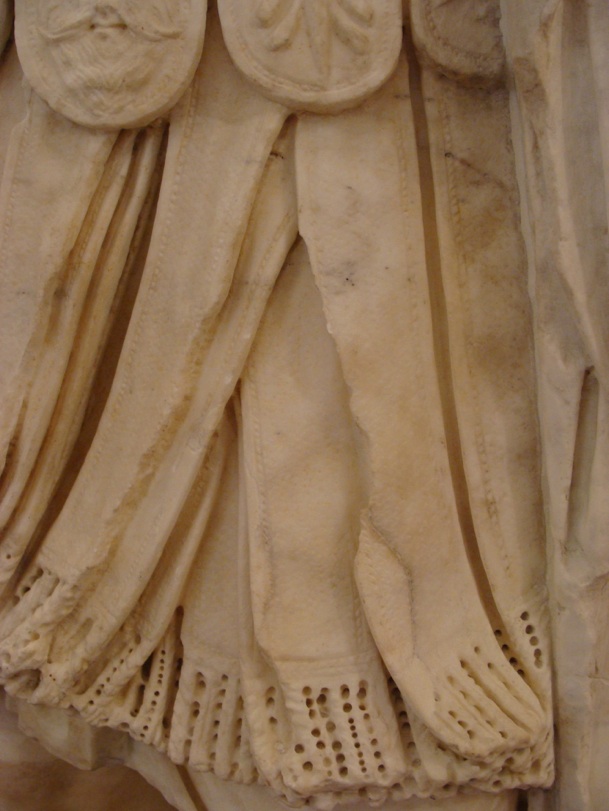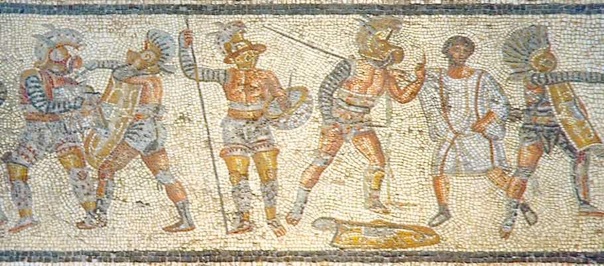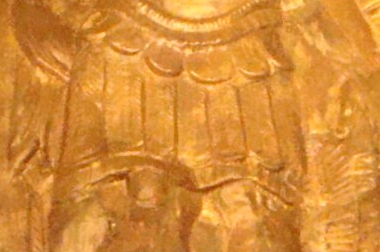AER Blog

Why using a Subarmalis?
Mittwoch, 27. April 2011

The „subarmalis“ (or „subarmalia“) is mentioned in Roman literary sources such as the
Scriptores Historiae Augustae, Sept. Sev. (VI.11) [Cum Romam Severus venisset, praetorianos cum subarmalibus inermes sibi iussit occurere. Eosdem sic ad tribunal vocavit armatis undique circumdatis.]
or in
De Rebus Bellicis (XV).
Generally it is assumed to have been mostly a second, inner layer of armour to protect against blunt trauma injuries, worn under chain mail or scale / lamellar armour. It indeed serves this purpose to a certain extent. Seen on a larger point of view it is a piece of equipment with a strategic purpose as well. This purpose becomes only palpable under historical conditions. During marches conducted by the University of Regensburg and Augsburg between 2005 and 2010 it became evident that the subarmalia are important to pad the shoulders and body of the soldiers during their marches, they prevent chafing, stiff shoulder muscles etc., and make marching much easier. A soldier wearing subarmalia is under less physical stress during longer campaigns, thus more effective. So also under a lorica segmentata a subarmalis is a sensible choice.
The AER subarmalia are made of 100% handwoven heavy linen, filled with wool blankets. The buckles are hand-forged, the subarmalia close on the left side, which would have normally been protected by the soldier´s shield. We decided to offer them like this, aware of the fact that there are cheaper versions of subarmalia availble made from industrial fabrics. With our product a subarmalis is available which is absolutely authentic in regard of the materials it is made of. In regard of the final price we decided to have them machine-sewn, though. Hand-sewn the price would double.
Why not leather?
Most interpretations and reproductions of subarmalia are based on sculptural evidence, such as reliefs, statues and monuments showing spoils of victory. It has been argued continuously that these might show leather subarmalia. In our opinion it is normally not possible to draw conclusions about actually used materials from sculptural eidence, since in most cases the colour which originally decorated them, is lost. So it is basically impossible to tell, whether the piece shown is made from fabric or leather. We decided to go for textile out of the following reasons:
-
1.Gladiator „soft“ armour seems to have been mostly made of padded fabric, as coloured paintings and mosaics suggest. Many parts of gladiator equipment derived from military use, and a connection is possible here as well. Below you can see such armours on the arms of gladiators on a mosaic from Lepcis Magna, Libya.
The „subarmalis“ or „thoracomachos“ was an extremely important piece of equipment in the Roman Army, but is a bit neglected in modern reenactment and living history. Especially under historic condictions the importance of the subarmalis becomes very evident, though.





Many statues show a fabric pattern on the pterges at a closer look. Also the presence of tassels normally only is sensible in connection with a fabric, i.e. the warp-threads would form them at the end of the fabric, just like on a wool blanket. See below our picture of a detail of an armoured statue in the museum at Cosa, Italy.
Finds of textiles that are interpreted as under-armour were found in different sites, such as Dura-Europos.
In regard of this evidence we decided to favour the textile- hypothesis over the leather hypothesis, we think that the indications clearly favour fabric. However, there are a few finds from Vindonissa (modern Windisch in Switzerland), which are probably leather parts of a subarmalis. This was also tested in combination with a fabric subarmalis, we will write a future blog entry about this, called „Customizing subarmalia“
The forms of our subarmalia are based on different original depictions, so e.g. the short-sleeved version is what could be seen on this relief from Rome, showing the Battle of Actium 31 BCE.
Other depictions are taken from urns and statuary evidence.


